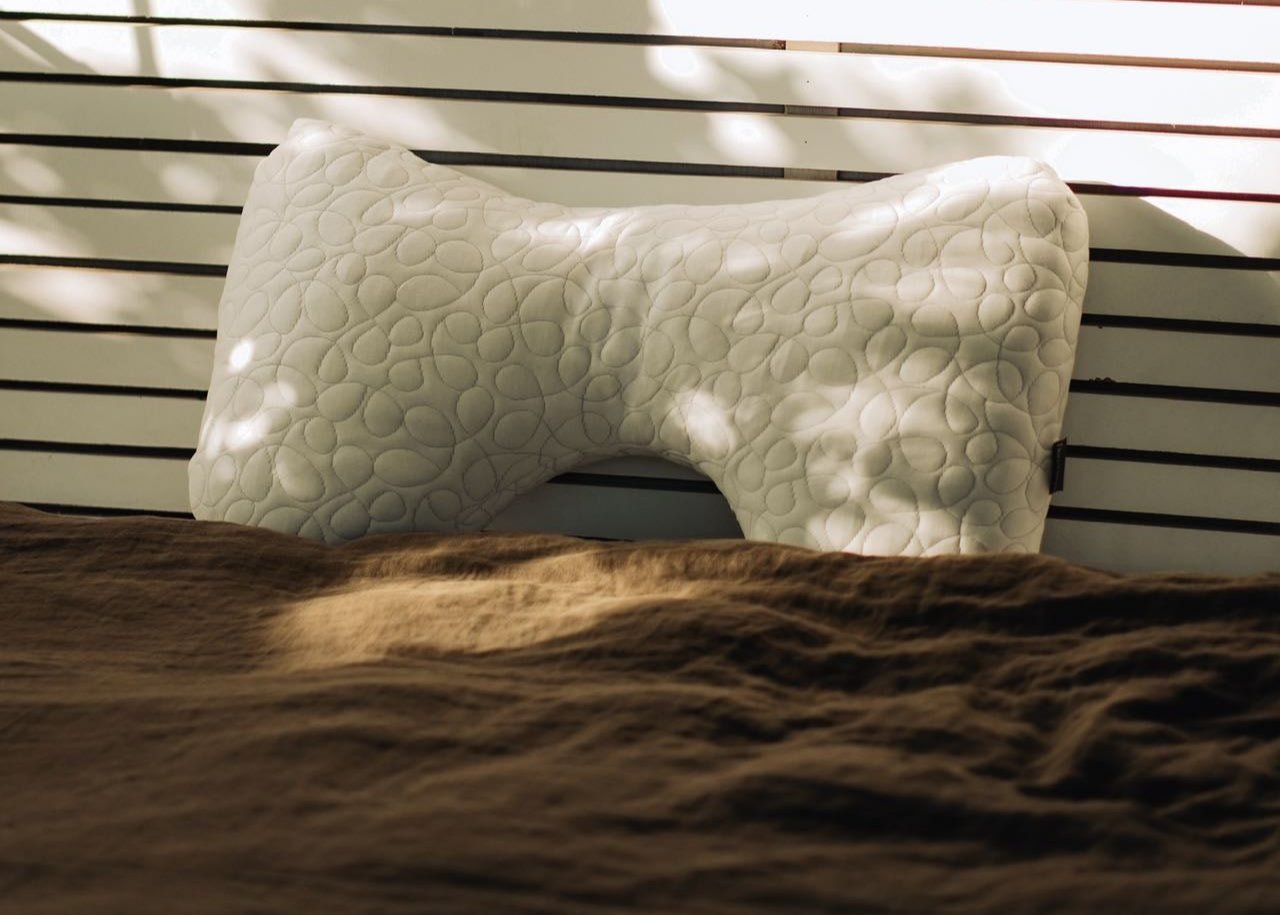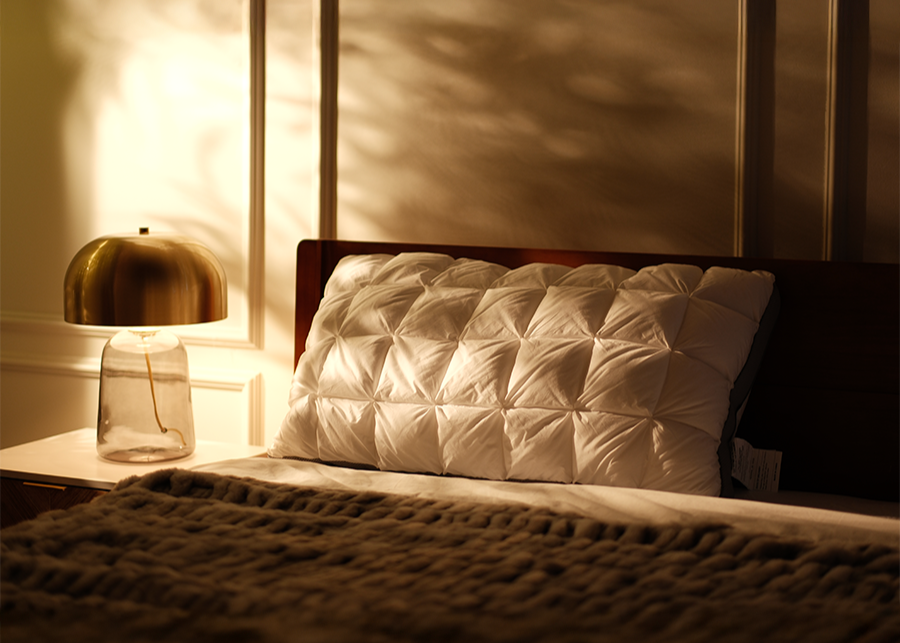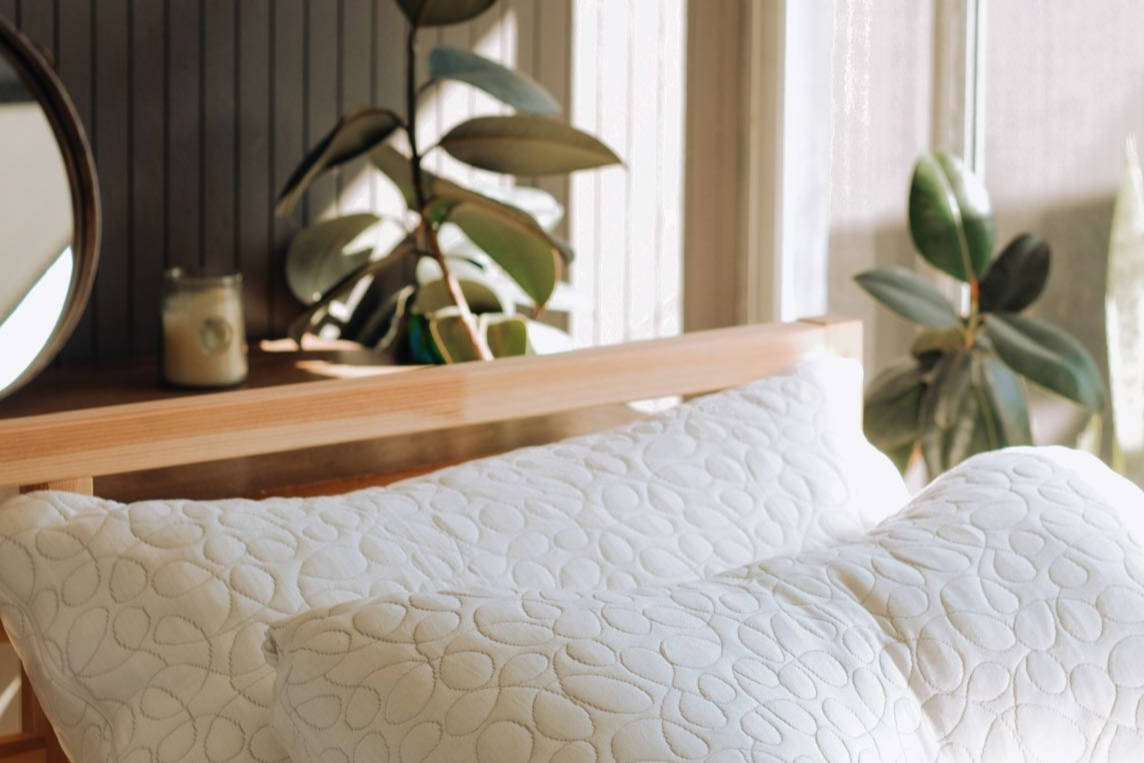Pillow Loft (Height): Why It Matters for Sleep Support
When shopping for a pillow, you’ll encounter the term “loft,” which refers to the height or thickness of a pillow. Loft can generally be described as low, medium, or high (sometimes also measured in inches). Choosing the proper pillow loft is just as crucial as picking the right firmness or fill material. A pillow’s height directly impacts how well it keeps your head, neck, and spine aligned during sleep. Too high or too low, and you could end up with neck pain or tossing and turning. In this article, we’ll discuss why pillow loft matters and how to determine the ideal loft for your needs.
What Is Pillow Loft?
Pillow loft is essentially the pillow’s elevation off the bed when it’s laying flat. A low-loft pillow is thin (usually under 3 inches thick), a medium-loft pillow might be around 3–5 inches, and a high-loft pillow is thicker (5 inches or more). Note that how a pillow measures in hand and how it behaves under weight can differ – for example, a highly compressible pillow might start out 6 inches tall but sink to 2 inches when you lay on it, effectively acting as a low-loft pillow. Loft is often intertwined with firmness: a very soft pillow of high loft may compress down to a medium or low effective loft when you lie on it. It’s important to think of effective loft, which is the height of the pillow with your head on it. Pillows can be made with various materials that affect loft: memory foam and latex pillows tend to maintain a consistent loft (especially solid foam ones), while down or polyester pillows can be fluffed high but then squish down. Manufacturers sometimes label pillows as “side sleeper” or “stomach sleeper” pillows, which usually correlates with loft (side sleeper pillows being thicker, stomach sleeper ones being thin). In short, pillow loft is a key dimension that determines the angle of your head in relation to your body when lying down.
Loft and Spinal Alignment
The primary reason loft matters is spinal alignment. When you lie down, your pillow needs to keep your head at a neutral angle – not craning up, and not dipping down. If you imagine standing with perfect posture, that’s what we want to replicate when you’re horizontal. A pillow that’s too high (excess loft) will bend your neck upward, as if you’re looking down at your feet while standing. This can put strain on the neck and upper back muscles and flatten the natural curve of your neck. Conversely, a pillow that’s too flat (insufficient loft) lets your head droop back or to the side, compressing joints and potentially pinching nerves. Low loft pillows tend to keep the neck at a neutral angle for certain positions, whereas high loft pillows can push the neck into a more curved position. Neither is inherently bad – it depends on your sleeping position (more on that soon). You’ll know loft is wrong if you frequently wake up with stiffness in your neck or shoulders. Think of it this way: your pillow is filling the gap between your head and the mattress created by your shoulder (when side sleeping) or by the curve of your neck (when back sleeping). The “height” of that gap is what your pillow loft should match. Proper loft keeps your spine aligned and prevents neck pain and muscle strain over time. In fact, one study-backed source notes that pillows too thick or too thin disrupt the natural curvature of the neck and can lead to cricks and pain. So, selecting the right loft is a simple way to ensure your pillow is helping, not hurting, your posture during sleep.
Choosing the Right Loft for Your Sleeping Position
Side Sleepers
Typically need a high loft, firmer pillow. This is because when you lie on your side, there is a significant distance from the mattress to your head due to your shoulder width. A thicker pillow (medium-high loft) fills that space and keeps your head level with your spine. If the pillow is too thin, your head will tilt downward. Most side sleepers do well with pillows labeled medium-firm and medium/high loft. For example, experts often suggest side sleepers go for a pillow around 4 to 6 inches of height, depending on shoulder breadth. One guideline: your nose should align with the center of your body when on your side – if your nose points down, pillow is too low; if it points up, pillow is too high. Many side sleeper pillows also have gussets (side panels) to maintain loft all the way to the edges, supporting the neck.
Back Sleepers
Need medium loft. On your back, you have less of a gap to fill – basically the curve of your neck. A pillow about 3–5 inches thick generally works, and it should be supportive enough to hold your head just high enough that your ears are level with your shoulders when viewed from the side. If a back sleeper’s pillow is too puffy, it forces the head forward (the classic chin-to-chest problem leading to neck pain). If too flat, the head tilts back too far. Often a back sleeper pillow might be a contoured pillow with a subtle raised neck support and a lower head cradle. Many back sleepers prefer a pillow on the thinner side of medium – say around 4 inches – especially if they have a smaller frame. Those with larger shoulders might need a bit more loft (or a rolled towel on top of a thinner pillow to customize the height).
Stomach Sleepers
Need low loft, if any. Sleeping on the stomach already puts the neck in a rotated, extended position. A pillow should be very thin – sometimes only 2 inches or so – just to provide a slight cushion. Some stomach sleepers actually do best with no pillow or a very flat, squishable down pillow that compresses nearly flat. The idea is to avoid bending the neck upward; your head should be almost level with your mattress. There are specialty ultra-thin pillows (even under 2 inches) made for stomach sleepers. If you’re primarily a stomach sleeper, investing in one of those might save you a lot of neck ache. Additionally, using a pillow under your chest or hips as mentioned earlier can compensate for a thin head pillow by preventing an exaggerated arch in the spine.
Combination Sleepers
If you change positions, you may need to pick a loft that is a compromise or adjustable. Many combination sleepers choose a medium loft pillow that isn’t too high for back sleeping but can be scrunched a bit for side sleeping. Adjustable-fill pillows shine here – you can add/remove filling to find a happy medium height that works in multiple poses, or even keep a separate thin pillow at hand for when you roll onto your stomach.
A handy tip: when lying in your usual position on a pillow, have someone take a side-view photo of you or check in a mirror (if on a bed with a mirror or using your phone camera timer). See if your head/neck forms a straight line with your mid-back. If your neck angles up or down, adjust loft accordingly (swap pillow or add towels for a quick experiment).
Loft vs. Firmness (and Why It’s Often Confused)
People sometimes use “high pillow” to mean firm and “flat pillow” to mean soft, but loft and firmness are separate properties. Loft is height; firmness is how much resistance the pillow offers when compressed. However, they interact. A very firm pillow will maintain its loft even under weight, whereas a very soft pillow will lose a lot of loft once you lay on it. So when picking the right loft, consider the pillow’s firmness and material. For instance, a down pillow might be 7 inches high when fluffed, but practically low loft when you lie on it because it squashes down. Memory foam or latex might start at 4 inches and stay close to 4 inches with your head on it – providing a consistent medium loft. That’s why a side sleeper can sometimes use a seemingly “short” latex pillow but not a short down pillow (the latter would go too flat). It’s wise to read reviews or product descriptions that mention suitable sleeping positions. Manufacturers often specify if a pillow is better for side/back/etc., which indirectly tells you about its effective loft and firmness combination. If you love a pillow material that’s soft and malleable (like down alternative), you might need a higher initial loft or to double it up to get the support. Conversely, if you like firm memory foam, a seemingly thinner pillow could suffice. Remember also that pillows can lose loft as they age – foam can break down, fibers clump – reducing their effective height. If you notice you’re starting to sink too far into your pillow after a year or two, it could be the loft has degraded and it’s time for a new pillow or to boost it (some pillows allow adding more fill). The bottom line: pay attention to how high your head is actually resting during sleep, not just how tall a pillow looks on the bed.
Pillow loft plays a critical role in ensuring your head, neck, and spine remain properly aligned through the night. The “right” loft isn’t one-size-fits-all – it depends on your sleeping position, body build, and the pillow’s firmness. Side sleepers usually require a lofty pillow to bridge the shoulder gap, back sleepers a medium loft to cradle the neck, and stomach sleepers the slimmest pillow possible. When choosing a pillow, don’t just think soft or firm; think about height. A pillow of perfect loft will feel almost like it disappears – you won’t notice any strain, and you’ll wake without neck pain. If you’re struggling with comfort, evaluate your pillow’s loft and make adjustments. It might be as simple as swapping for a thicker or thinner pillow, or getting an adjustable pillow to dial in the exact height. Finding that ideal loft will help your pillow truly support you, leading to more comfortable and healthy sleep. Find your ideal pillow loft and finally achieve proper spinal alignment. DonaHona’s Support Collection, featuring customizable layered inserts, allows you to easily adjust pillow height for ultimate comfort.










Leave a comment
This site is protected by hCaptcha and the hCaptcha Privacy Policy and Terms of Service apply.